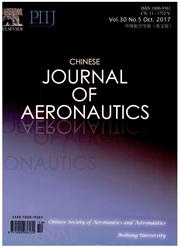

 中文摘要:
中文摘要:
在DVB-RCS卫星通信中,为某个业务分配的时隙在MF-TDMA帧中的位置分布将影响该业务的时延特性。本文分别针对固定速率和实时可变速率业务,对MF-TDMA的帧长度、终端分配的时隙数量及位置分布与业务时延性能之间的关系进行了建模分析。理论分析表明时隙位置是影响业务时延的一个重要因素,位置分布越均匀,越能提高业务的时延性能;时隙均匀分配相比传统的时隙连续分配可以有效降低业务平均时延,且时延不随帧长的变化而变化;在时隙均匀分配方式下,提高实时可变速率业务的带宽分配可以更有效的提高时延性能。在DVB-RCS标准基础上,提出了一种与标准完全兼容的时隙均匀分配方法(TUAM),通过计算机仿真验证了算法的有效性以及建模分析的正确性,该算法可有效地保证业务具有极低的平均时延和时延抖动,使得VoIP等实时业务不会由于端到端时延过大而丢包,提高了DVB-RCS系统对于实时业务QoS的保障能力。
 英文摘要:
英文摘要:
In digital video broadcasting and return channel via satellite (DVB-RCS) systems, the time slot location assigned to a given traffic in multiple frequency-time division multiple access (MF-TDMA) frame has significant effects upon the traffic delay per- formance. This article proposes models to analyze the relationships among frame length, bandwidth assignment (assigned time slot count), time slot location in frame, and traffic delay performance for traffics of constant bit rate (CBR) and variable bit rate (...
 同期刊论文项目
同期刊论文项目
 同项目期刊论文
同项目期刊论文
 ELGR: An Energy-Efficiency and Load-Balanced Geographic Routing Algorithm for Lossy Mobile Ad Hoc Ne
ELGR: An Energy-Efficiency and Load-Balanced Geographic Routing Algorithm for Lossy Mobile Ad Hoc Ne Energy saving in cluster-based wireless sensor networks through cooperative MIMO with idle-node part
Energy saving in cluster-based wireless sensor networks through cooperative MIMO with idle-node part Performance optimisation of a medium access control protocol with multiple contention slots in multi
Performance optimisation of a medium access control protocol with multiple contention slots in multi Improving Energy Efficiency in a Wireless Sensor Network by Combining Cooperative MIMO With Data Agg
Improving Energy Efficiency in a Wireless Sensor Network by Combining Cooperative MIMO With Data Agg Impact of transmit power on throughput performance in wireless ad hoc networks with variable rate co
Impact of transmit power on throughput performance in wireless ad hoc networks with variable rate co 期刊信息
期刊信息
